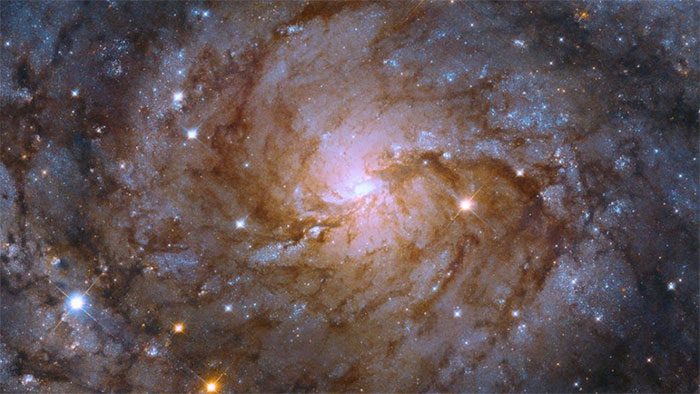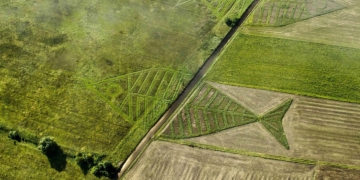If it weren’t for all the interstellar material obstructing the view, IC 342 would be one of the brightest galaxies in the sky.
The Hubble Space Telescope recently captured images of the spiral galaxy IC 342, also known as Caldwell 5. According to NASA, scientists have faced challenges in observing this galaxy due to cosmic obstacles.

New image of the spiral galaxy IC 342. (Image: NASA)
Due to its size and actual brightness, along with its position in a dusty region, IC 342 has earned the nickname “the hidden galaxy.”
“This galaxy appears near the equatorial plane of the Milky Way, where dense cosmic gas, cosmic dust, and glowing stars obscure our view,” NASA stated.
To some extent, Hubble can see through the debris thanks to its infrared capabilities. Infrared light is less scattered by cosmic dust, allowing for a clearer view of the galaxy behind the interstellar material.
“The sparkling, frontal view of the galaxy’s center displays intertwining cosmic dust wrapping around a core of hot gas and brilliant stars,” NASA described in its image of IC 342.
“This core is a type of ionized hydrogen region. Such regions are where energy for stars is generated, where thousands of stars can form over a few million years,” NASA added.
According to NASA, IC 342 would be one of the brightest galaxies in our sky if it weren’t for the excessive cosmic dust blocking the view.
IC 342 is also relatively close in galactic terms, located only 11 million light-years from Earth. It has a relatively large size, with a diameter about half that of the Milky Way.





















































